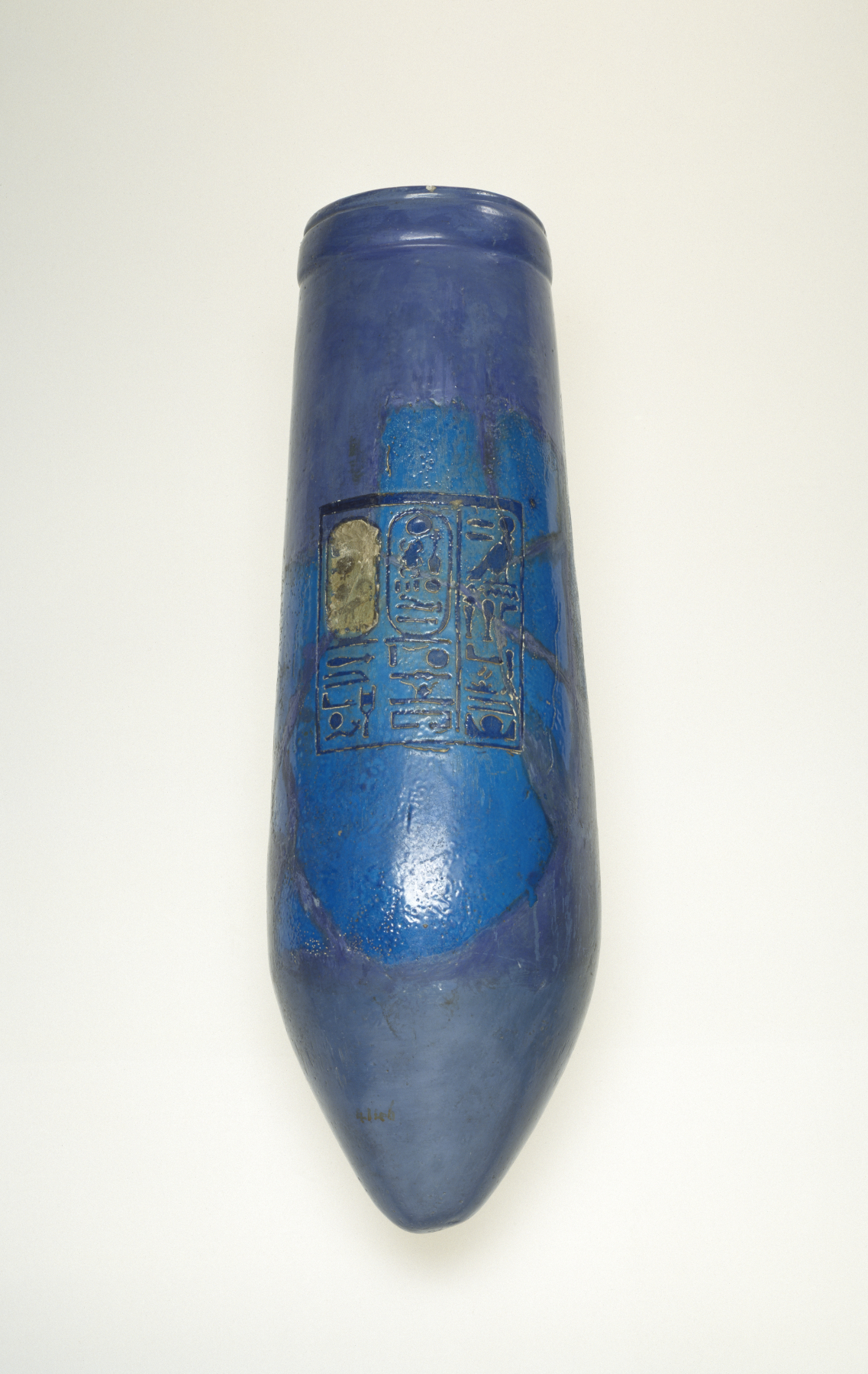Situla with Erased Cartouche of Akhenaten
(Ancient Egypt and Nubia )
Situlae were vessels used to pour offerings of milk or water in purification rituals. They take the form of a human breast and were associated with the goddess Isis. Situlae were found in temple treasuries at Amarna, the city built by the pharaoh Akhenaten to honor Aten, the sun-disk deity.
This vessel continued to be used after the demise of Akhenaten and the king's birth name has been erased. It has a central field containing three columns of inscription executed in dark blue glaze.
Inscription
Provenance
Provenance (from the French provenir, 'to come from/forth') is the chronology of the ownership, custody, or location of a historical object. Learn more about provenance at the Walters.
Rev. William MacGregor Collection Sale, Sotheby's, London, 1922, no. 268; Dikran Kelekian, Paris and New York [date and mode of acquisition unknown]; Henry Walters, Baltimore, 1923, by purchase; Walters Art Museum, 1931, by bequest.
Exhibitions
| 1999-2001 | Pharaohs of the Sun: Akhenaten, Nefertiti, Tutankhamen. Museum of Fine Arts, Boston, Boston; Los Angeles County Museum of Art, Los Angeles; The Art Institute of Chicago, Chicago; Rijksmuseum van Oudheden, Leiden. |
| 1996 | Millet and Barbizon Art. Matsumoto City Museum, Matsumoto City; Tokuyama City Museum of Art and History, Tokuyama; Kasama Nichido Museum, Kasama City; Ishikawa Prefectural Museum of Art, Kanazawa. |
Geographies
Egypt (Place of Origin)
Measurements
12 x 4 1/4 in. (30.48 x 10.8 cm)
Credit Line
Acquired by Henry Walters, 1923
Location in Museum
Accession Number
In libraries, galleries, museums, and archives, an accession number is a unique identifier assigned to each object in the collection.
In libraries, galleries, museums, and archives, an accession number is a unique identifier assigned to each object in the collection.
48.456


